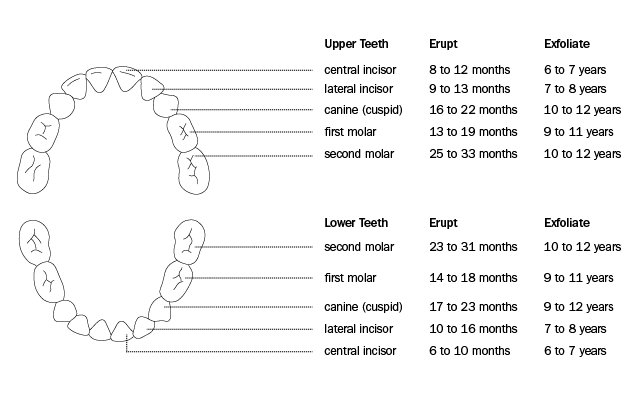Tooth eruption and teething pain
Tooth eruption (teething) in infants is often accompanied by local pain and swelling, drooling, irritability and occasionally a mild fever. Rubbing the gums with a clean finger, teething rings and cold compresses can provide symptomatic relief of teething pain. Teething rings should be cold but not frozen. Systemic analgesics (eg paracetamol) can be used.
Teething gels should not be used because of the lack of evidence of efficacy and the potential for harm. Some teething gels contain salicylates and excessive doses or prolonged use can cause systemic toxicity. Teething gels containing local anaesthetic should not be used for teething pain in infants and children due to the risk of serious adverse effects (eg seizures, cardiac effects, death). Amber teething necklaces are ineffective and dangerous because they are a choking and strangulation hazard.
Primary teeth eruption and exfoliation pattern and Secondary teeth eruption pattern give an indication of the average ages at which tooth eruption occurs.


